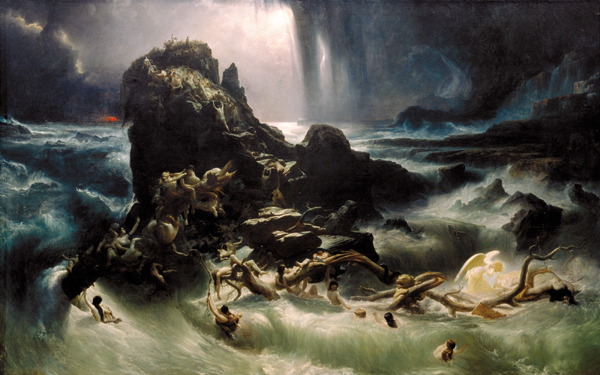Image Details

Tate Gallery, London/Art Resource, NY
God punishes mankind, drowning the innocent along with the guilty, in The Deluge (1837–40), painted by the Irish artist Francis Danby. A throng of desperate people crawl up the rock at center, in a futile attempt to survive the Flood.
What did the early humans do to arouse such anger in their creator? Adam ate the apple, and his son Cain killed Abel—but was drowning everyone really necessary?
Plagued by this question, the authors of the extrabiblical First Book of Enoch searched the Genesis account for further evidence of man’s wickedness—and for more hopeful images of redemption. The reasons for God’s wrath are made clear in the first part of 1 Enoch, which elaborates on the cryptic text of Genesis 6:1–4, in which “sons of God” cohabitate with the “daughters of men.” In Enoch’s account, a group of rebellious angels mates with human women to produce a race of destructive, evil giants called Nephilim. To rid the earth of this scourge, God sends the Flood.
In Danby’s painting, Noah’s Ark—a symbol of hope?—can be seen on the distant horizon (right of center).
In the lower right of Danby’s work, an angel weeps over a dead woman and what appears to be a giant. The Book of Enoch influenced several British artists after it was first published in English in 1821, and it is possible that, with this vignette of lamentation, Danby is referring specifically to Enoch’s account of divine retribution for the Watchers’ sins: “And inasmuch as [the Watchers] delight in their children, the slaughter of their beloved ones they shall see, and over the destruction of their children they shall lament and make supplication without end: but they shall have neither mercy nor peace” (1 Enoch 12:3–6). But BR has been unable to confirm whether Danby was drawing on Enoch. If you know, we’d like to hear from you.
